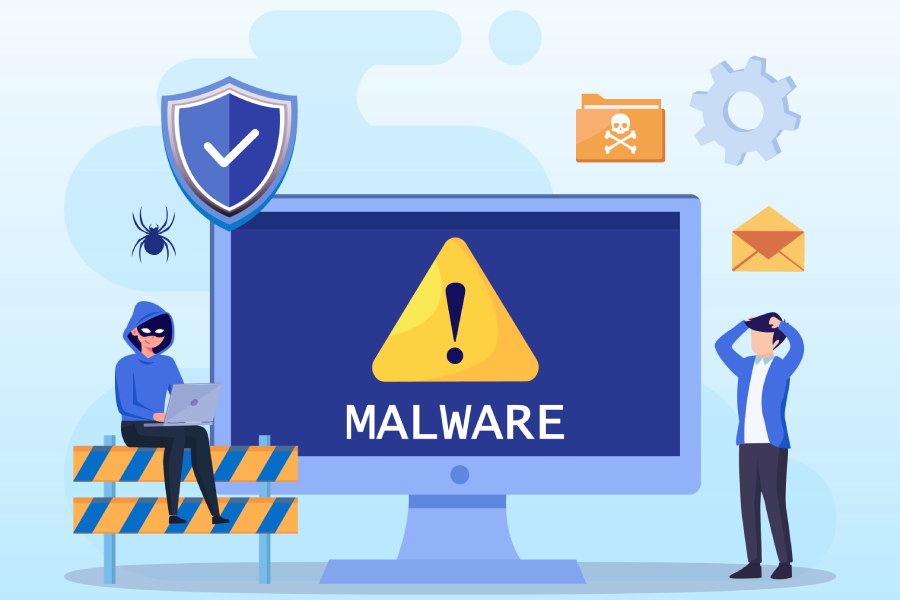In today’s rapidly evolving cybersecurity landscape, Office 365 security remains a paramount concern for businesses that rely on cloud-based productivity suites. With increasing sophistication in malware, ransomware, and phishing attacks targeting email platforms, implementing robust malware protection in Office 365 environments is critical. Leveraging Microsoft Defender for Office 365 alongside best practices can significantly enhance your organization’s cybersecurity posture.
Understanding Malware Threats in Office 365 Environments
Office 365, now an integral component of Microsoft 365, offers organizations seamless cloud security and collaboration capabilities. However, its popularity makes it a prime target for cybercriminals who exploit vulnerabilities via email, collaboration tools, and endpoints connected to the network. Common malware threats include ransomware, zero-day exploit attacks, email spoofing, and phishing campaigns designed to harvest credentials or deploy malicious payloads.
Malicious attachment scanning plays a crucial role in detecting and quarantining suspicious files before they reach end users. Threat intelligence integrated within Microsoft Defender continuously updates detection algorithms to identify zero-day attack vectors and newly discovered malware strains. Additionally, ransomware protection mechanisms isolate infected files while enabling swift threat remediation to prevent lateral movement within the network.
Businesses must also consider insider threats and social engineering techniques that bypass traditional spam filtering controls. Advanced threat protection (ATP) capabilities powered by machine learning malware detection and user behavior analytics enhance security baselines by continuously monitoring for anomalous activity indicative of compromised accounts or email threats.
Key Features of Office 365 Malware Protection
Microsoft has embedded powerful email threat protection features within Office 365’s suite to safeguard organizations against evolving threats. Microsoft Defender for Office 365 serves as a cornerstone in delivering advanced malware detection and phishing protection solutions. Key features include:
- ATP Safe Attachments: This feature inspects email attachments in a secure environment using real-time scanning and machine learning to detect malicious content before delivery, effectively preventing zero-day exploits.
- ATP Safe Links: Provides phishing URL filtering by dynamically scanning links within emails and documents to block access to fraudulent or harmful websites, mitigating risks associated with email spoofing and phishing attacks.
- Spam Filtering and Email Filtering: Robust spam filtering engines complement malware detection by identifying unsolicited or malicious bulk emails, enhancing the effectiveness of the email security gateway.
- Email Encryption and Data Loss Prevention (DLP): Protect sensitive information by encrypting emails and enforcing DLP policies aligned with regulatory security compliance requirements.
- Malware Quarantine and Threat Remediation: Suspicious emails or attachments are moved automatically to malware quarantine, enabling security teams to investigate and respond swiftly through automated security incident response workflows.
- Integration with Microsoft 365 Security Dashboard: Centralized management and threat analytics provide visibility into security alerts, security posture, and threat remediation status across users and endpoints. This enables continuous monitoring and security automation for greater operational efficiency.
- Multi-factor Authentication (MFA): MFA strengthens endpoint protection by requiring additional authentication factors, significantly reducing the risk of unauthorized access even if credentials are compromised.
Configuring Microsoft Defender for Office 365
Effective configuration of Microsoft Defender for Office 365 is essential to harness its advanced threat protection capabilities. Administrators should start by defining comprehensive security policies tailored to organizational risk profiles and compliance mandates. Best practices include:
- Setting up Anti-Phishing Policies: Utilize built-in intelligence to create anti-phishing rules that leverage machine learning malware detection and email spoofing protection to flag or block suspicious senders.
- Enabling Safe Attachments and Safe Links: Activate Safe Attachments to scan all inbound email attachments in real-time, and Safe Links to provide proactive phishing URL filtering. These features collectively reduce exposure to malicious emails triggering ransomware or distributing malware.
- Configuring Spam Filtering and Malicious Attachment Scanning Thresholds: Adjust filtering sensitivity and quarantine settings to balance security with business continuity, minimizing false positives while ensuring threats are contained.
- Enable Threat Intelligence Sharing and Integration: Incorporate external threat feeds from partners like FireEye, Palo Alto Networks, and CrowdStrike to supplement Microsoft’s native threat intelligence. This widens the layer of protection with broader coverage of emerging threats.
- Establish Incident Response Protocols: Automate security alerts and integrate Microsoft Defender with endpoint detection and response tools such as SentinelOne or Sophos for an accelerated security incident response lifecycle.
- Regular Security Updates & Baselines: Keep the threat prevention stance current by applying continuous security updates and adhering to Microsoft-recommended security baselines.
Best Practices for Email Security and Phishing Prevention
Email remains the primary vector for malware and ransomware delivery. To maximize email security in Office 365 environments, organizations should adopt a multi-layered defense strategy:
- Deploy an email security gateway solution that complements Microsoft Defender for Office 365 by offering additional spam filtering and phishing URL filtering capabilities (vendors like Mimecast, Proofpoint, and Barracuda Networks provide excellent integration options).
- Employ security policies that mandate multi-factor authentication and enforce strict password policies, mitigating risks associated with compromised credentials.
- Use email encryption to secure sensitive communication and prevent data breach incidents resulting from unintended data disclosures.
- Leverage user behavior analytics to detect phishing campaigns by correlating unusual user activity patterns, thereby enabling prompt threat remediation.
- Conduct regular security awareness training, educating employees about email spoofing protection, phishing email identification, and safe handling of suspicious attachments.
- Integrate security automation and continuous monitoring through tools like Microsoft 365 Security Center to achieve real-time visibility and response capabilities.
Leveraging Safe Attachments and Safe Links in Office 365
Microsoft Defender for Office 365’s ATP Safe Attachments and ATP Safe Links services provide essential defenses against sophisticated email threats:
- ATP Safe Attachments operates by routing each email attachment through a detonation chamber environment. Utilizing machine learning malware detection and real-time scanning, it identifies malicious code, including ransomware payloads, before delivery. Attachments deemed suspicious are automatically placed in malware quarantine or blocked, reducing the attack surface.
- ATP Safe Links rewrites URLs embedded in email content so that each click is dynamically verified against Microsoft’s vast threat intelligence databases powered by network security and threat analytics. This protects users from phishing URLs, malicious websites, and exploits launched through email campaigns attempting to bypass static filters.
By combining these capabilities with complementary endpoint protection and network security measures, organizations can achieve holistic protection against email-borne threats and align with comprehensive security management frameworks.
Office 365 security, fortified by Microsoft Defender and best practices, empowers enterprises to withstand complex malware threats. Integration with leading cybersecurity vendors like Kaspersky, Bitdefender, Vade Secure, and ESET further extends visibility and control, creating a resilient security posture. Continuous enhancements in threat intelligence, machine learning malware detection, and security automation ensure that modern businesses can proactively defend against evolving cyber threats.
Importance of Regular Software Updates and Patch Management
Maintaining an optimal Office 365 security posture relies heavily on the regular application of software updates and diligent patch management. Microsoft continuously releases security updates and patches to address vulnerabilities, fixing known exploits that could otherwise be weaponized in zero-day attacks or exploited through malicious attachment scanning. Timely deployment of these updates ensures that Microsoft Defender for Office 365 and integration with Microsoft 365 maintain their effectiveness in cloud-based malware protection, advanced threat protection, and ransomware protection.
Patch management not only helps close security gaps but also improves malware detection capabilities, thanks to enhanced machine learning malware detection algorithms integrated within Microsoft’s security updates. Organizations leveraging Office 365 security benefit when updates extend protections such as spam filtering, email encryption, and phishing URL filtering. Additionally, patch management is a fundamental component of security compliance and security baselines, providing a benchmark for continuous monitoring and security posture optimization.
Leading security firms such as FireEye, Palo Alto Networks, and CrowdStrike emphasize the importance of rapid patching as part of a holistic cybersecurity framework. Without consistent updates, threat intelligence becomes less effective, leaving security management teams vulnerable to evolving tactics targeting email threat protection and endpoint detection and response tools. Automated security updates integrated with security automation workflows can improve security incident response efficiency, reduce the attack surface, and support threat remediation.
Implementing Multi-Factor Authentication for Enhanced Security
Multi-factor authentication (MFA) has become an indispensable element of Office 365 security, providing an additional layer beyond traditional password authentication to protect against credential-based attacks, especially in environments reliant on cloud security. Microsoft 365 supports MFA natively, allowing organizations to enforce strong access controls that reduce risk from email spoofing, phishing, and unauthorized access attempts.
By integrating MFA with Microsoft Defender for Office 365, organizations strengthen their security policies to better defend against ransomware threats and prevent data breaches. MFA, combined with user behavior analytics and real-time scanning features, enhances cybersecurity by verifying user identities through methods such as biometrics, OTPs, or security tokens, limiting the effectiveness of phishing attacks and account compromise.
Leading endpoint protection vendors like SentinelOne, Sophos, and Kaspersky advocate deploying MFA across all user accounts to augment detections from the email security gateway and extend protection to network security environments. The synergy between MFA and email filtering mechanisms, including ATP Safe Links and ATP Safe Attachments, contributes to the overall resilience against advanced persistent threats, zero-day vulnerabilities, and malicious attachments.
Monitoring and Responding to Malware Incidents in Office 365
Effective monitoring and response capabilities are crucial to quickly mitigating the impact of malware incidents within Office 365 environments. Microsoft Defender provides a comprehensive security dashboard that consolidates security alerts, threat analytics, and security incident response tools, empowering organizations to identify and remediate threats efficiently.
Continuous monitoring powered by machine learning malware detection and threat intelligence allows security teams to detect suspicious patterns, including phishing attempts, spam, and ransomware delivery. Integration with endpoint detection and response (EDR) and security automation facilitates swift quarantining of malware, including automated malware quarantine for malicious emails or infected endpoints.
Security management systems from vendors like Proofpoint, Mimecast, and Barracuda Networks complement Microsoft’s native capabilities by providing enhanced email threat protection, threat remediation workflows, and advanced spam filtering. Incident responders rely on these tools for real-time scanning and security alerts, enabling them to respond to threats such as email spoofing and targeted spear-phishing attacks rapidly, reducing the risk of data loss and network security incidents.
Training Employees to Recognize and Avoid Malware Threats
Human factors often represent the weakest link in cybersecurity frameworks, making employee training a vital component of Office 365 security strategies. Organizations must educate users on identifying social engineering tactics, such as phishing emails, malicious attachments, and suspicious links, to strengthen anti-phishing defenses and ransomware protection.
Training programs should incorporate insights from threat intelligence and user behavior analytics, teaching employees how to recognize indicators of compromise, understand email spoofing protection mechanisms, and comply with security policies such as data loss prevention and email encryption mandates. Microsoft and other prominent cybersecurity vendors like Vade Secure, ESET, and McAfee provide adaptive training platforms that simulate phishing attacks and encourage best security practices.
Regular training complements technological safeguards such as ATP Safe Links and ATP Safe Attachments by reducing incident occurrence resulting from user errors. When employees are properly trained, security incident response teams can focus more effectively on advanced threats rather than remediating easily preventable breaches, thereby enhancing the organization’s overall security posture.
Integrating Third-Party Security Solutions with Office 365
While Microsoft Defender for Office 365 offers robust security features, integration with reputable third-party security solutions further elevates email threat protection and endpoint protection capabilities. Vendors such as Symantec, Trend Micro, Cisco, and Kaspersky provide complementary tools that enhance cloud-based malware protection, phishing URL filtering, and network security.
These third-party solutions often specialize in areas like machine learning, malware detection, zero-day attack prevention, and comprehensive email security gateways that provide advanced spam filtering and malicious attachment scanning. Integration with Microsoft 365 allows seamless data synchronization for threat analytics, enabling unified security dashboards and coordinated threat remediation efforts.
Security automation facilitated by integration reduces manual tasks in security management, enhances continuous monitoring, and accelerates security incident response. For instance, coupling Microsoft’s native anti-phishing capabilities with Bitdefender’s advanced threat protection or Sophos’s endpoint detection and response solutions strengthens defenses against emerging cybersecurity challenges. Organizations adopting an integrated approach align more closely with security compliance standards and achieve a resilient cybersecurity framework capable of withstanding dynamic threat landscapes.
Key Takeaways
- Regular software updates and patch management are essential for effective malware detection and zero-day attack prevention in Office 365 security.
- Multi-factor authentication enhances access control, significantly reducing phishing and ransomware risks.
- Continuous monitoring and real-time security alerts enable swift malware quarantine and incident response.
- Employee training is critical to complement technical defenses against phishing, spoofing, and ransomware threats.
- Integrating third-party security solutions with Microsoft Defender for Office 365 strengthens overall cybersecurity and security compliance.







